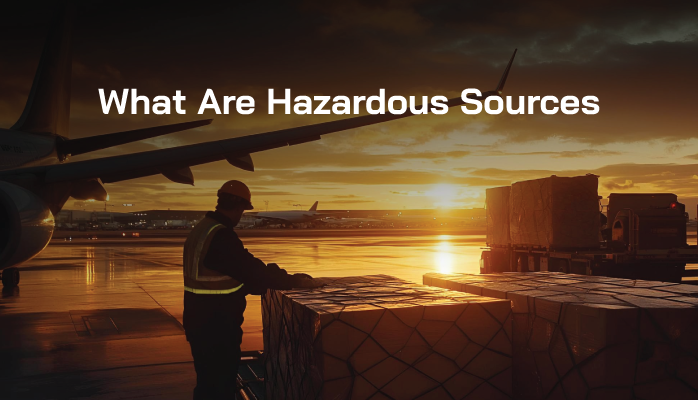What Is a Hazard

A hazard in aviation risk management is a condition that poses danger to your organization and can lead to safety incidents if not mitigated. Hazards are central to the entire risk management process. Often, hazards are either confused with risks (i.e., accidents) or hazardous sources. In this article, we will explore what hazardous sources are and how they differ from hazards.
First, let’s distinguish what a hazard is. A hazard is a term that satisfies ALL the following real-life conditions:
- It is a dangerous condition, such as an object, situation, circumstance, that poses an unacceptable level of danger;
- Occurs once in the issue life cycle;
- Can lead directly to safety mishap, accident if not mitigated; and
- Arises from hazard mechanisms.
For example, the Federal Aviation Administration (FAA) defines a hazard as,
“A condition that could foreseeably cause or contribute to an aircraft accident…”
(14 CFR § 5.5)
Though it is sometimes confused as other things, such as below, a hazard is NOT:
- Benign objects (birds, mountains, people), which are hazardous sources;
- Safety mishaps, which are another way of saying risk occurrences;
- Damages, which are a product of risk occurrence; and
- Dangerous actions, which are associated with initiating mechanisms.
The only point where different organizations may disagree on a hazard for a given situation is what part of a safety event was the “dangerous condition.” We advise you to seek guidance from your compliance authority on this point.
What Are Hazardous Sources
Hazardous sources are the “raw material” that hazards arise from. Hazardous sources might be considered:
- Hazards without context;
- Benign objects;
- Things that become dangerous through initiating mechanisms.
Benign objects (hazardous sources) can become hazards in the right context. For example, a tower is not a hazard. But a tall tower in proximity to a flight path is a hazard. Notice that in this case, a hazardous source (tower) became a hazard when given context (height, location).
It’s extremely important to note that hazardous sources:
- Pose no inherent dangerous condition;
- Have no inherent threat level;
- Can lead to hazard occurrence in the right circumstances (they don’t lead to accidents directly); and
- Don’t “arise” from anything – they are the “raw material” or “base elements” that can lead to a threat.
Distinguishing the difference between a hazard and hazardous sources will help you build your classification scheme and analyze safety issues.
What Is a Root Cause (Hazardous Mechanism)

Hazardous sources should also not be confused with root causes. Hazardous sources are NOT root causes, nor can they ever be. Root causes describe an entirely different element of safety than hazardous sources.
Root causes are initiating mechanisms that give hazardous sources context. Consider the following example:
- There is a tall building (hazardous source);
- Due to a storm, a pilot strays off course (storm/straying are root causes); and
- The aircraft flies in close proximity to the building (hazard).
See the difference? The tall building posed no threat, but certain mechanisms (storm and leaving flight path) caused this source to become dangerous.
See how to conduct root causes analysis for more information about root causes.
What Is the Difference Between Hazard and Hazardous Sources
Hopefully, you see the difference between a hazard and hazardous sources. Let’s compare the main differences:
- Threat level:
- Hazards are an inherently dangerous condition
- Hazardous sources are not inherently dangerous
- Leads to:
- Hazards can lead to safety mishaps if not mitigated
- Hazardous sources can lead to hazard occurrence through initiating mechanisms (root causes/contributory factors)
- Context in safety life cycle:
- A hazard occurs once in the issue life cycle
- There are usually multiple hazardous sources in any given issue
- Useful for:
- Hazards are useful for understanding top threats
- Hazardous sources are useful for understanding what objects have the greatest relevance in your risk management efforts
Last updated July 2025.





